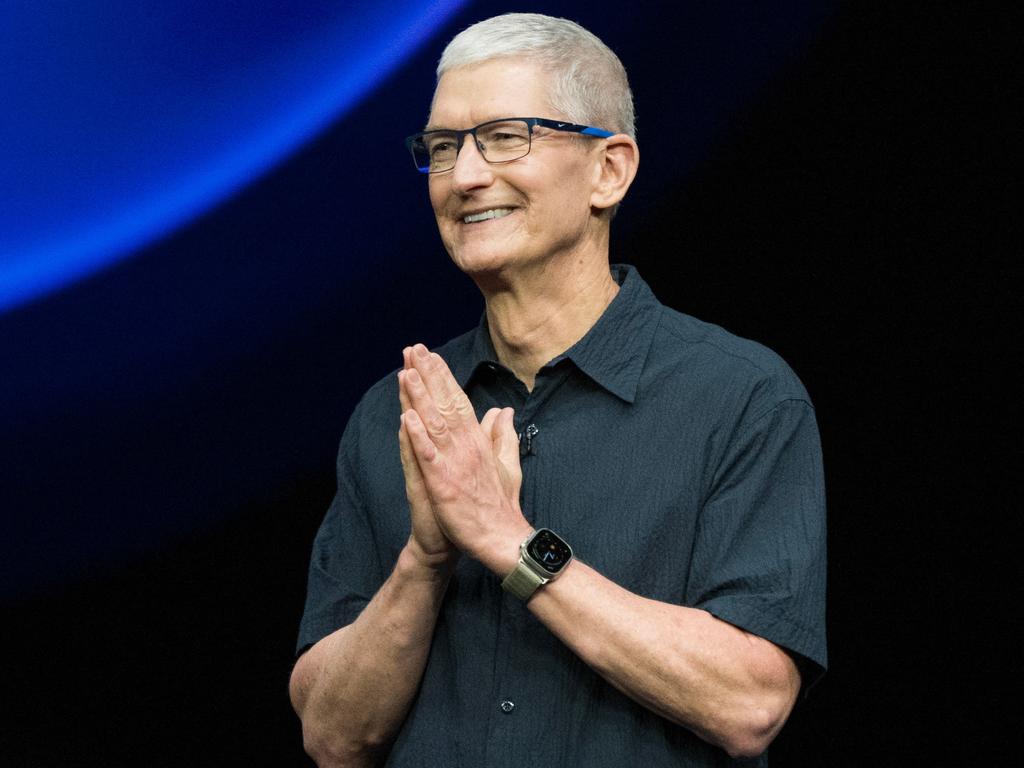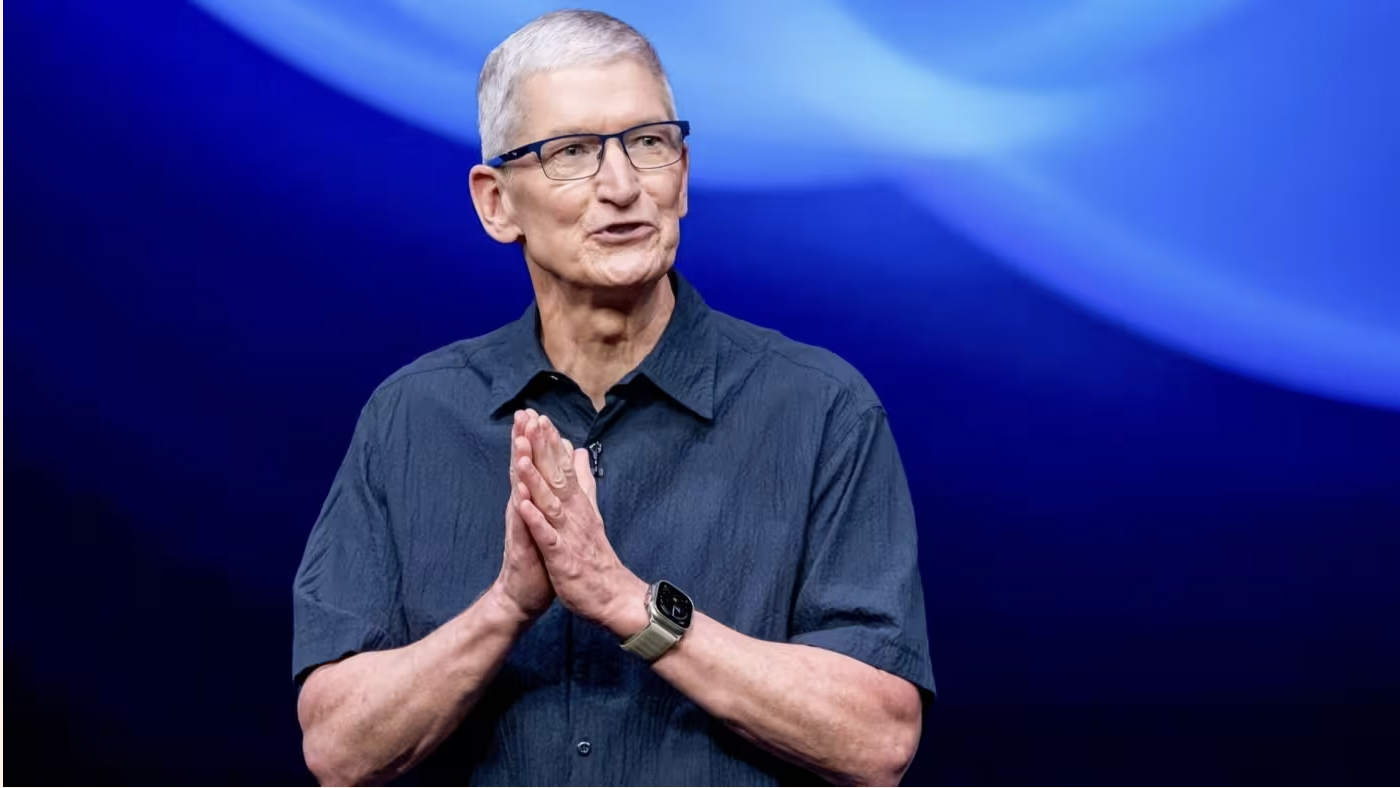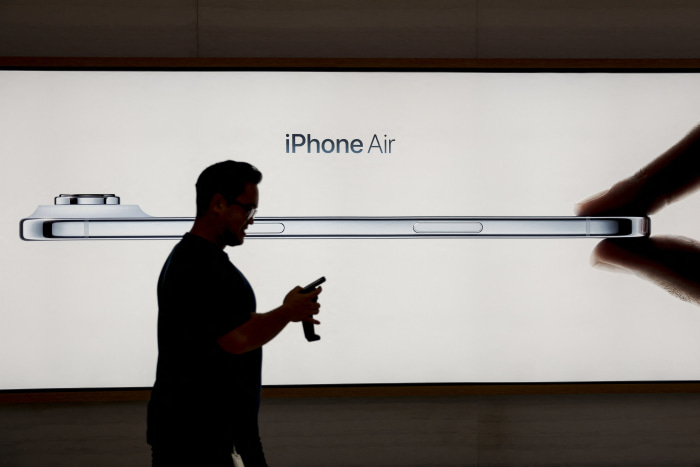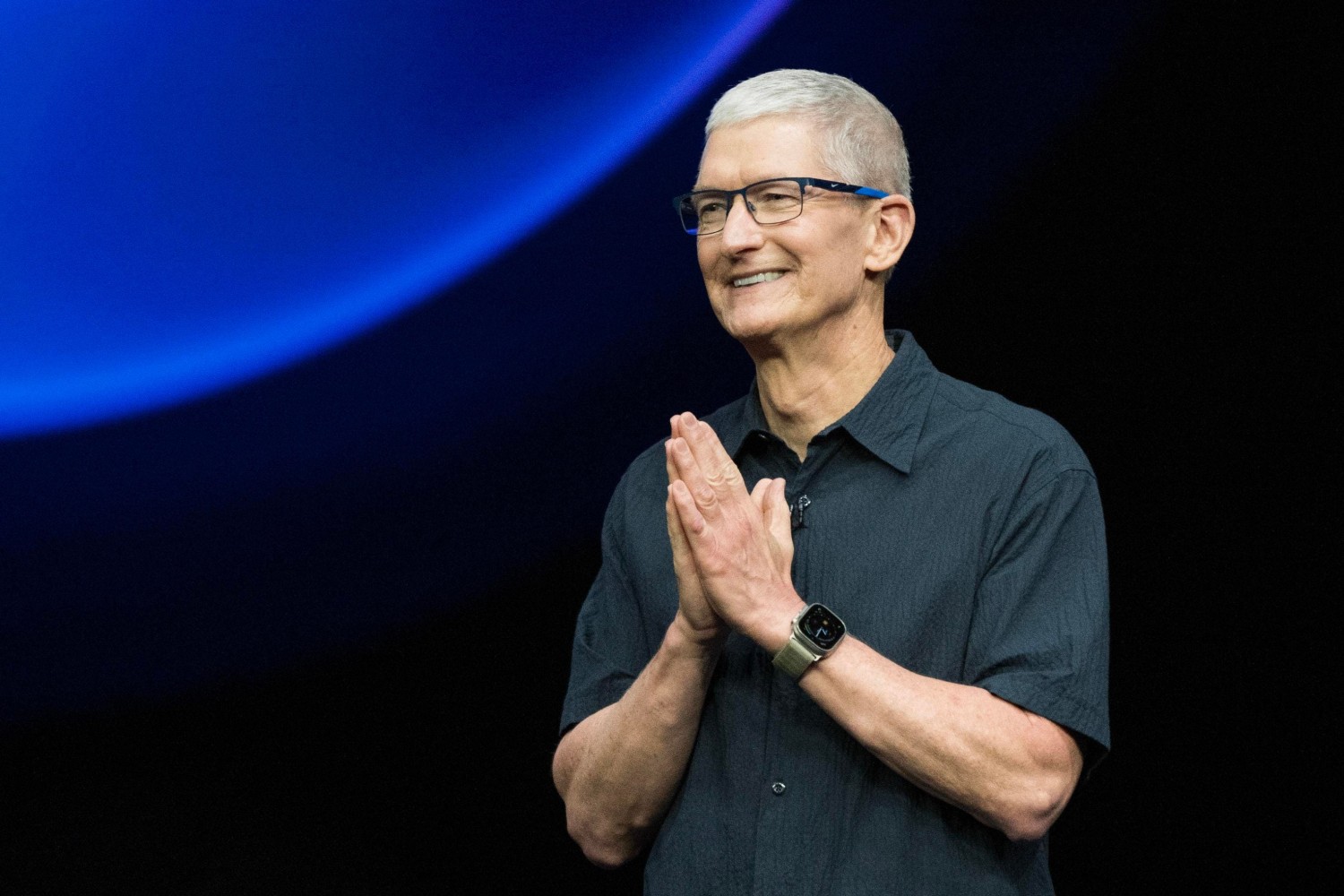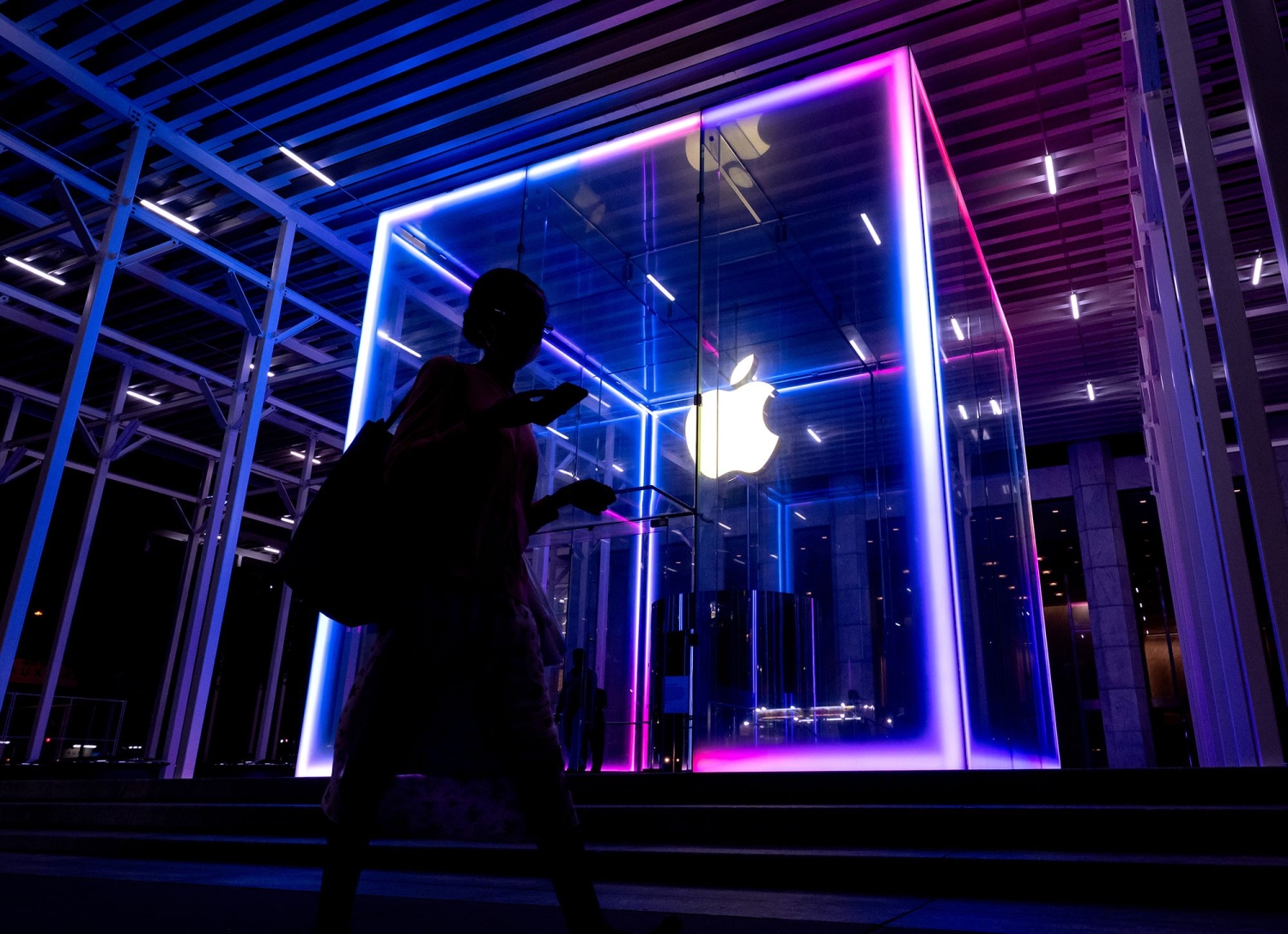
This article is more than
2 year oldApple’s Ideal Credit Card Partner to Replace Goldman Sachs Is Chase

Apple and Goldman Sachs are on the verge of splitting up, and Chase is the ideal partner to step in. Also: Sonos gets ready to take on Apple and others in headphones and TV set-top boxes; Apple continues eyeing 6G; and new retail stores are coming.
Last time in Power On: Apple’s hardware technologies team still has plenty of work to do.
The Starters

Apple Inc.’s long-anticipated breakup with Goldman Sachs Group Inc., its main financial services partner, is now underway — with the iPhone maker offering the bank a path out of their deal.
It’s been a tumultuous endeavor for the two companies, mired by delays and financial losses. They announced their first partnership in 2019 with the rollout of the Apple Card. Since then, the duo expanded into savings accounts and work together on part of Apple’s “buy now, pay later” service.
Despite creating a unique credit card interface that had deep iPhone integration — and well-received features like fewer fees and cash back that accrues daily — the partnership quickly turned sour.
Behind the scenes, there were engineering problems developing the service. On the outside, there were complaints about gender discrimination on credit limits and approvals, as well as long customer service hold times and issues when clients disputed charges.
Between the engineering spending and losses on loans, the credit card was a disaster for Goldman’s balance sheet, contributing to billions of dollars in red ink. It doesn’t take a bank as well regarded as Goldman to know that it should try to ditch a program burning that much cash.
Over the past several months, Goldman has been trying to wind down its consumer businesses. That includes canceling plans for a co-branded credit card with T-Mobile US Inc. and signaling that it will unload its card with General Motors Co. Getting out of business with Apple is a big part of the strategy shift, but the contract between the two companies isn’t up for at least another five years.

Apple could have theoretically forced Goldman to hold on — but it has a lot to lose too. The iPhone maker doesn’t want to link its brand to a bad experience or a partner that’s no longer committed to the project. So Apple recently offered Goldman Sachs a deal to get out early.
If Goldman accepts Apple’s overture, it’s likely to take more than a year for the partnership to wrap up. There will probably be some back-and-forth negotiations on what has to be paid and to whom, but all signs point to the deal ending. It’s probably just a matter of time before it’s official.
That means Apple is back to square one in terms of needing a new partner. This wasn’t an easy process when the company first pitched the Apple Card to banks several years ago. It wasn’t clear if the product would be a success or whether embracing Apple — and its burdensome terms — would be worthwhile.
That’s why JPMorgan Chase & Co., American Express Co. and Citigroup Inc. all passed, leading Apple to work with Goldman, which had little consumer product experience at the time. But the Apple Card of today is different: For all its struggles, the offering has millions of users and more than $10 billion worth of deposits in related savings accounts.
The Apple Card also gets prime placement within the Wallet app, giving it an edge over all the other credit cards usable on an iPhone.
That’s all to say that some of the banks that didn’t want to partner with Apple four years ago might be willing to reconsider today. The name that has been discussed publicly the most so far has been AmEx. It has the premium brand and a history of credit card partnerships — and its CEO golfs with Apple services chief Eddy Cue.

But the bank that probably makes more sense as Apple’s new partner is Chase, which already has a significant relationship with the iPhone maker.
The bank currently handles a number of roles for Apple, including:
-
Storing some of the tech company’s roughly $60 billion in cash on hand.
-
Serving as one of the earliest and most successful Apple Pay partners.
-
Teaming up with Apple on its Ultimate Rewards program, which offers discounts on Apple devices to its banking and credit card customers.
-
And, of course, serving as one of the biggest credit card partners for transactions at Apple retail outlets, online store and the App Store.
Chase has something else going for it: It offers credit cards that use the MasterCard network. That’s the same system that powers the Apple Card, meaning there’d be no need to switch to the Visa or American Express platforms.
Apple would also probably be keen to move its Apple Cash debit card over to Chase. That service is currently backed by Green Dot Bank, a company that’s had struggles of its own — along with reliability issues. Chase already has a strong network of debit cards that the Apple Cash card could fit into, offering customers perks like ATM access.
The one component of Apple’s financial services portfolio that wouldn’t be a fit for Chase is its savings account. That product is touted as a high-yield account, with an annual rate of 4.15%. Unlike Goldman and some other banks, Chase only offers peanuts when it comes to interest for savings accounts. So, assuming Chase won’t get into high-yield accounts to secure a deal with Apple, there will need to be another solution for that product.
Thankfully, there’s a pretty clear one: The savings account deposits could be sold and split up among banks willing to offer the same interest rates to Apple. And users of the accounts probably wouldn’t care or even notice, as long as they’re able to access their cash.
The Bench

Sonos is planning headphones, a TV set-top box, new speakers and more. Sonos has some big plans, including a bid to take on Apple, Sony Group Corp. and Bose Corp. in headphones. It’s also looking to challenge Apple, Roku Inc. and Google in TV equipment.
Last month, I published details on the Sonos product road map for the next few years. Here is the information in a bit more digestible form:
-
A Sonos app update called “Passport” that lets it control mobile products: late 2023 or early 2024.
-
New in-ceiling 8-inch speakers: first half 2024.
-
Headphones code-named “Duke”: first half 2024.
-
Sonos Roam 2 (“Sidecar”): mid-2024.
-
Sonos Voice Control 2.0: late 2024.
-
Sonos Era 100 for businesses (“Raven”): 2024.
-
New high-end amp (“Premier”): second half 2024.
-
New high-end sound bar (“Lasso”): late 2024.
-
TV set-top box (“Pinewood”): late 2024 or early 2025.
-
New subwoofer (“Lotus”): 2025.
For Sonos fans wondering about a new version of the Play:5 speaker, I’ve heard nothing to suggest that one is in development. Still, it’s an aggressive road map overall.
Sonos is counting on this flood of new products to help revive sales. But there’s been some skepticism within the company about the two biggest bets: headphones and a push into video.
The TV market is extraordinarily crowded. Even Apple has struggled to make an impact with its hardware. And there are few businesses more competitive than headphones.
Now, Sonos’ plan is to beat rivals by touting its audiophile-friendly brand and the ability to fine-tune the sound. That might not be enough, but we'll see how things shake out over the next several months.

Apple is turning more of its attention to 6G, even as it works on 5G cellular modem. It has been well established that Apple’s work on a modem chip has been a mess, even compared with some of its other challenging projects.
There are a few things at play here:
-
One, Apple is racing to get its modem finished so it doesn’t need to re-up a contract (again) to buy the component from Qualcomm Inc. The two companies have feuded over the years, and Apple really doesn’t want to rely on Qualcomm for this vital iPhone part. Further delays also would be seen as an admission of failure.
-
Modems are extremely difficult to develop and require testing globally. They’re also utterly essential to operating a phone. If Apple’s modem comes to market and doesn’t work well, it will be the biggest black eye of Tim Cook’s tenure as chief executive officer.
-
Finally, bringing this component in-house would give Apple more control over the technology and potentially offer financial benefits. That’s why the company is pursuing this strategy. But unlike some of Apple’s homegrown chips — the M series and A series — the modem isn’t likely to bring a big boost in performance. That might make the switch more of a marketing challenge.
While Apple is working on its first 5G modem, it’s increasingly hiring engineers to look at 6G. The first signs of Apple’s interest in the next-generation technology came in 2021, and now a highly specific job listing has appeared on the company’s website:
As a Cellular Platform Architect, you will drive and coordinate the design and modeling of a 6G reference architecture. A suitable set of prototype implementations and reference architecture models needs to be developed that allow the evaluation of technology candidates and use cases. In that role you will plan, drive, and actively participate in those modeling and prototyping activities. You will collaborate cross-functionally with research and development teams in proposing, planning, and implementing simulations and experiments to assess 6G technology candidates!
Don’t get too excited, though. The 6G standard isn’t expected until 2030 at the earliest, and it’s still not even clear how much faster it will be than 5G.

Apple set to open another store in South Korea as it closes one of three Hawaii locations. In June, I published a list of Apple’s future retail projects, including about 50 new locations, remodels or relocations. Since then, we’ve seen those plans begin to take shape. New stores have indeed opened in the US, China and UK, while permits and other public records have confirmed other plans in that road map.
Next up for Apple will be a new store in Hanam, South Korea, at the Starfield mall. It opens on Dec. 10. Apple was due to open another store in the country simultaneously, but it now appears that one is running behind.
Other new international stores, including a location at La Vaguada mall in Madrid and a remodeled Milton Keynes outlet in the UK, have been delayed as well.
In the US, a new store is opening on Dec. 14 at Birkdale Village near Charlotte, North Carolina. This location is replacing a nearby Northlake Mall store that closed abruptly in March after a slew of nearby shootings.
In Hawaii, Apple is closing a store at Honolulu’s Royal Hawaiian Center in January. It has two other locations in the city.
